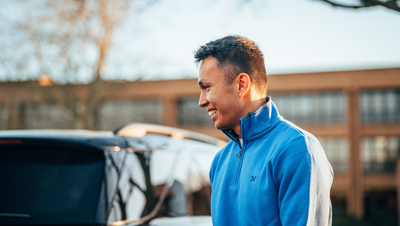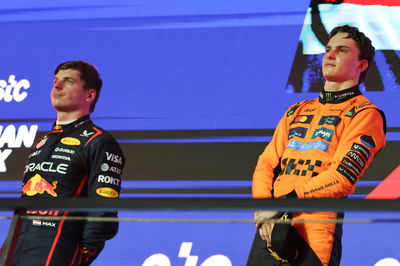Will Pirelli’s new 18-inch F1 tyres deliver? What to expect
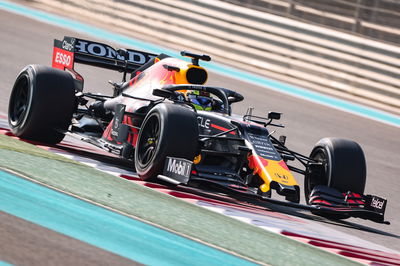
F1’s sole tyre supplier is introducing new 18-inch tyres. But size is not the only difference as the range of compounds for 2022 will feature completely new characteristics.
Pirelli has carefully designed its 2022 product based on feedback from the drivers, who have requested a tyre that is less sensitive to overheating and degradation so they can push harder for longer in a bid to improve the on-track spectacle.
“This tyre is designed in a different way, with different targets,” explained Mario Isola, Pirelli’s head of F1 and car racing.
“Our drivers are asking for less overheating, less degradation, they want to push on tyres, they want to fight on track, and clearly we decided and we agreed with the FIA, FOM and the teams to follow this direction.
“So, we had to design a new profile, new construction, optimise the footprint, and design a new range of compounds. It is a completely new product with a new approach.”
28 days of extensive testing were carried out over the course of last year, with nine of the 10 F1 teams using mule cars specially adapted for the 18-inch wheel rims.
As Williams did not build a mule car, it was absent from the in-season tests. Williams did however receive special dispensation from the FIA to run its 2021 car in the two-day post-season Abu Dhabi test as Pirelli concluded its vital programme.
Having crunched the numbers on all the data gathered, Pirelli outlined its findings and expectations for the upcoming campaign.
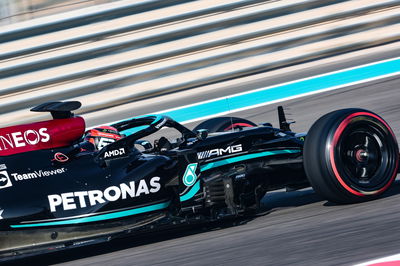
“In terms of comparison to the tyre development tests that we ran during the season, I would say that we have confirmed that the new product has the characteristics that I mentioned before, so: less overheating, drivers have the opportunity to push more.
“That was important in Abu Dhabi because in Abu Dhabi we had also some traffic. That was something we could not simulate during our tyre development test where we had one car that was running on track or two cars maximum.
“In terms of wear, it’s difficult to make a prediction because we were using mule cars, so we need to wait for the real performance of the new 2022 cars,” he added.
Teams originally predicted that the new cars would be around 2-3 seconds slower than the previous generation, but simulations from Abu Dhabi provided encouraging signs that the 18-inch tyres could be much closer to the performance levels of their 13-inch predecessors.
“We have simulations coming from the teams, simulations are telling us that the new cars are not much slower compared to last year’s cars,” Isola continued.
“At the beginning we were talking about more than three seconds per lap, now we are talking about half a second, one second.
“So if they start with only one second difference it means that during the season they probably achieve the same level of performance that we had in 2021.”
The extensive changes to the 2022 regulations will also see the revival of standardised wheel rim covers, which will be supplied to all 10 teams by German wheel manufacturer BBS Motorsport.
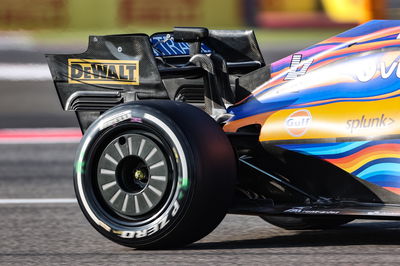
"We had a working group that was managed by the FIA together with BBS, Pirelli and also the supplier of the default sensor,” said Isola.
“We started in 2020… We ran some tests with the 18-inch tyres fitted to BBS rims [which] was a very useful approach to have this working group. They were meeting every week to monitor the operation of the activity in terms of how the teams will manage the temperature.”
Not only does Pirelli believe it has fixed the issues to prevent dramatic, high-speed blowouts - like the ones seen in Baku or Qatar last year - it has also come up with ways to try and stop teams from bending the rules in their relentless pursuit for extra performance.
However, Isola suspects teams will still find clever ways to push the boundaries.
“This year we have more space between the rim and the brake,” he said. “In the past we know that the teams were using the brake transfer from the brake to the rim to manage the temperature inside the tyres and also manage the pressure. It will be different in 2022.
“I believe that is still in part a performance differentiator. So the teams will try to use this also in 2022 - if they are able to do that, we will discover it.”
F1 cars will become even heavier for 2022, with the minimum weight rising to 795kg. That marks an increase of nearly 50kg compared to last season and a whopping 200kg rise compared to the cars used a little over a decade ago.
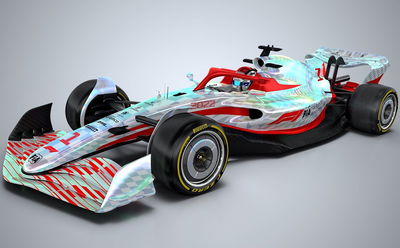
Pirelli factored this into its testing programme by requesting the teams to add extra weight to their mule cars to simulate representative conditions. As a result, the Italian manufacturer is confident the increased weight of the new cars will not prove problematic for the tyres at high-degradation circuits.
“We knew in advance that the plan was to have heavier cars and during our tests we asked the teams to provide mule cars with extra weight. So we already tested in these conditions,” Isola stressed.
Instead, he anticipates the biggest influence on tyre behaviour will stem from the overhaul to the aerodynamic package concept for 2022. However, Isola insisted Pirelli is prepared to make adjustments where necessary.
“The biggest difference I believe is the aero package because the old cars were still with the standard 2021 aero package, while the new 2022 aero package is completely different,” Isola said. “So the way in which we achieved this aero downforce is different and it has an impact on the compounds, the wear and some elements.
"That’s why I said we are happy with the current level of development of the product, but we are also ready to make some fine-tuning according to the new cars.”
Although he admitted Pirelli’s more robust tyres could result in one-stop strategies becoming the norm, Isola thinks it will not be an issue providing the drivers can race each other harder.
“I hope we don’t have less strategic variabilities because the idea and the way in which we have designed the tyres is to continue to have different strategies, a mix of one and two stops,” he said.
“It is also true that with a new product with less degradation, it is possible that we will have less pit stops and the majority of races could be one-stop. For me, it is not an issue as long as we have good races and action on track.
“If we have drivers that can push for overtake - and when overtake is too easy, it’s not good, it’s important that drivers are putting a lot of effort in to overtake - that is exactly what spectators want.”
